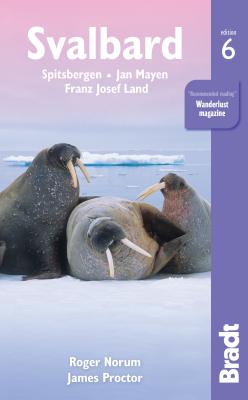
Svalbard: Spitsbergen, Jan Mayen, Franz Josef Land
Description
The Bradt guide to Svalbard, including Spitsbergen, Franz Josef Land and Jan Mayen, is a unique, standalone guidebook to this evocative Arctic archipelago, a place that is plunged into darkness for four months each year and where there are 4,000 snow scooters for a population of just 2,500, and where the main city, Longyearbyen, was founded by an American (John Longyear, a Bostonian, started the Arctic Coal Company and set up a mining operation for some 500 people in 1906). This new sixth edition has been thoroughly updated throughout and offers new material on everything from adventure tours to accommodation, environmental change to restaurants. Also covered are the restoration of Barentsburg and the opening of Svalbard's historic mine to visitors. Newly updated and amended, this edition reflects important recent changes in the archipelago, making it the perfect guide to a quintessential bucket-list destination.Possibly the most remote destination in the developed world, Svalbard is the planet's most northerly settled land and the top (if not the end) of the world, and it was on and around Svalbard that most of David Attenborough's Frozen Planet was filmed. A trip to Svalbard easily lends itself to notching up geographic superlatives and adventurous travellers seek out experiences such as husky driving and hikes across the permafrost. The main tourist period falls in Svalbard's brief summer, from June to August, when it's light around the clock and not very cold. However, increasingly popular for winter sports - especially because the next few years will enjoy unusually high Northern Lights activity - are the so-called 'light winter' months (March-May), when there is both sunlight and snow. The winter season (November/December-March) offers many possibilities for outdoor adventure - and the polar night is an experience in itself. Despite winter temperatures that can drop to over 40 below zero, Svalbard's glorious mountains, majestic fjords and sprawling valleys are the perfect setting for adventurous journeys out to the back of beyond. This brand-new edition of Svalbard provides all of the practical and background information you'll need to explore this wild place, turning the hostile into the hospitable.

